Abstract
Background:
The relationship between seizures and alcohol consumption is complex. Alcohol typically acts as a depressant on the brain, increasing the threshold for seizures. However, seizures can also occur during alcohol withdrawal, particularly after a period of heavy drinking.
Aims:
To examine the seizure patterns in individuals with alcohol dependence and that undergoing alcohol withdrawal, while also exploring the neuropsychiatric complications associated with these conditions.
Materials and methods:
Study design –
Prospective observational study
Study place and Study period –
Erode district and conducted for 6 months
Sample size –
70 Patients
Study criteria –
The inclusion criteria for our study includes Patient with age group (18-94 years) and Seizure patients with history alcohol use and alcohol withdrawal. On the other hand, the exclusion criteria involve Pediatric seizure patients, Patient with known co-morbid condition which may affect re-occurrence of seizure and Pregnant and lactating women.
Statistical analysis –
Results:
Our study results show that 91.42% of the patients were male. Our study indicates that 28.57% of the patients were employed as handloom workers or in IT and other IBM SPSS version 29.0.1.0 (171), Chi-square test, and Spearman correlation coefficient.
Results:
Our study results show that 91.42% of the patients were male. Our study indicates that 28.57% of the patients were employed as handloom workers or in IT and other computer-related fields. None of the patients were drug addicts. Our study findings suggested that 40% of the patients were identified as having mild to moderate alcohol dependence using the AUDIT scoring system. Our study findings suggested that more than 4 points were scored by patients in alcohol withdrawal assessed using the PAWSS.
Conclusion:
Alcohol plays a major role in triggering seizures, particularly through hazardous drinking behaviors and withdrawal. Withdrawal significantly raises the risk of focal seizures, generalized tonic-clonic seizures (GTCS), and the onset of neuropsychiatric symptoms.
Keywords
Seizure, Alcohol withdrawal, Alcohol dependence
Introduction
One of the most significant phases of a woman's Seizures are temporary occurrences of symptoms caused by abnormal and excessive neuronal activity in the brain 1. Various factors such as the location of seizure onset, brain maturity, underlying health conditions, sleep patterns, medication, and other elements can influence how seizures manifest. They can affect a person's consciousness, emotions, memory, thinking abilities, behavior, and sensory, motor, and autonomic functions 2. The relationship between seizures and alcohol consumption is complex. Alcohol typically acts as a depressant on the brain, increasing the threshold for seizures. However, seizures can also occur during alcohol withdrawal, particularly after a period of heavy drinking 3. Alcohol withdrawal syndrome (AWS) is associated with disruptions in neurochemical balance, including increased glutamate (an excitatory neurotransmitter) and decreased GABA, which is involved in calming brain activity 4. Chronic alcohol use can lead to an imbalance in these neurotransmitters, increasing the risk of AWS and withdrawal seizures 5. One method used in clinical settings to assess the severity of alcohol withdrawal is the PAWSS scale, which is a questionnaire-based tool designed for this purpose. It helps healthcare professionals evaluate and monitor patients experiencing alcohol withdrawal symptoms 6. Excessive alcohol consumption is widely recognized as a trigger for idiopathic generalized epilepsy (IGE), and a subset of late-onset IGE cases may manifest as alcohol-related seizures (ARS) 7. Our study incorporates the Alcohol Use Disorders Identification Test (AUDIT) scoring system to evaluate patients with alcohol dependence. Uncommon diseases associated with seizure disorders include Moyamoya Disease (MMD), Wernicke's encephalopathy (WE), Gaze Palsy, Autoimmune Encephalitis (AIE), and Hepatic Encephalopathy (HE). Moyamoya disease is a rare cerebrovascular condition characterized by progressive narrowing in the terminal segments of the internal carotid arteries, leading to an increased risk of blood clots, strokes, and transient ischemic attacks in affected individuals 8-9. This study aims to examine the seizure patterns in individuals with alcohol dependence and that undergoing alcohol withdrawal, while also exploring the neuropsychiatric complications associated with these conditions.
OBJECTIVES:
- To evaluate the seriousness of alcohol dependency and withdrawal using standardized scales like AUDIT for dependence and PAWSS for withdrawal symptoms.
- To analyze seizure occurrence patterns in alcoholic dependent versus withdrawal patients and identifying associated neuropsychiatric issues in those with seizures.
- To compares laboratory tests and diagnostic procedures between these groups
- To identify rare medical conditions in both alcohol-dependent and withdrawal populations.
METHODOLOGY:
Study design –
Prospective observational study
Study place and Study period –
Erode district, Tamil Nadu and conducted for 6 months
Sample size –
The study involved 70 patients admitted in hospital in Neurology department.
Study criteria –
The inclusion criteria for our study includes Patient with age group (18-94 years) and Seizure patients with history alcohol use and alcohol withdrawal. On the other hand, the exclusion criteria involve Pediatric seizure patients, Patient with known co-morbid condition which may affect re-occurrence of seizure and Pregnant and lactating women.
Study procedure –
The AUDIT is a questionnaire-based scale designed with PAWSS as a reference. In our research, we've integrated the AUDIT scoring system to evaluate alcohol dependence in patients. It consists of 10 questions, each scored on a scale of 0 to 4, except for questions 9 and 10, which use a scale of 0, 2, or 4. Scores can range from 0 to 40, where 0 represents a non-drinker with no alcohol-related issues.
Ethical approval –
This study was approved by the Sudha Institute's Ethical Committee following the submission of a comprehensive proposal containing the study title, duration, inclusion and exclusion criteria, objectives, and a concise methodology outlining the planned work.
Statistical analysis –
The statistical analysis in the study utilized IBM SPSS version 29.0.1.0 (171), commonly known as Statistical Package for the Social Sciences (SPSS). The study groups were compared using the Chi-square test, while the correlation among variables and study groups was examined using the Spearman correlation coefficient.
RESULTS:
Table 1 show that 91.42% of the patients were male. Table 2 reveals that 61.43% of the patients were aged between 40 and 61 years. Table 3 indicates that 28.57% of the patients were employed as handloom workers or in IT and other computer-related fields. Table 4 highlights that 61.4% of the patients were alcoholics, 78.5% were non-vegetarians, 38.5% had withdrawn from alcohol, and 28.5% were smokers. None of the patients were drug addicts.
Table 1: Gender-wise distribution of patients

Table 2: Age-wise distribution of patients

Table 3: Occupation based distribution of patients
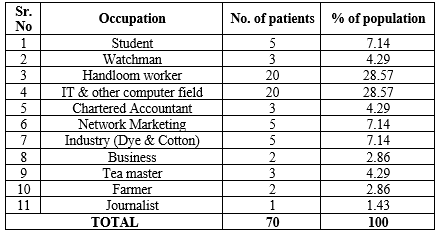
Table 4: Lifestyle based distribution of patients

Figure 1 illustrates that 40% of the patients were identified as having mild to moderate alcohol dependence using the AUDIT scoring system. Figure 2 shows that more than 4 points were scored by patients in alcohol withdrawal assessed using the PAWSS.
Figure 1: Employing AUDIT scoring system to identify alcohol dependence patients
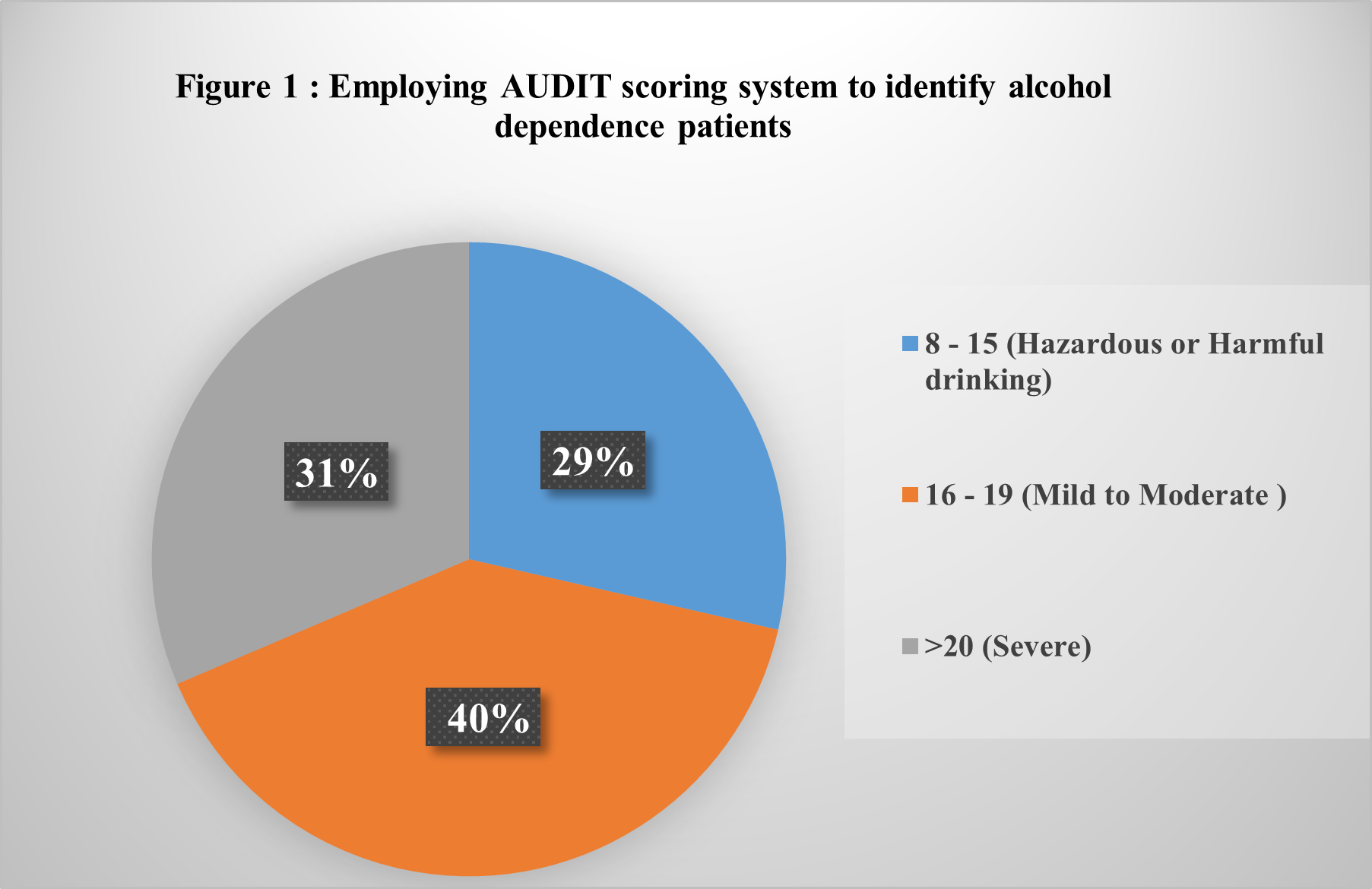
Figure 2: Employing PAWSS to identify Alcohol Withdrawal patients
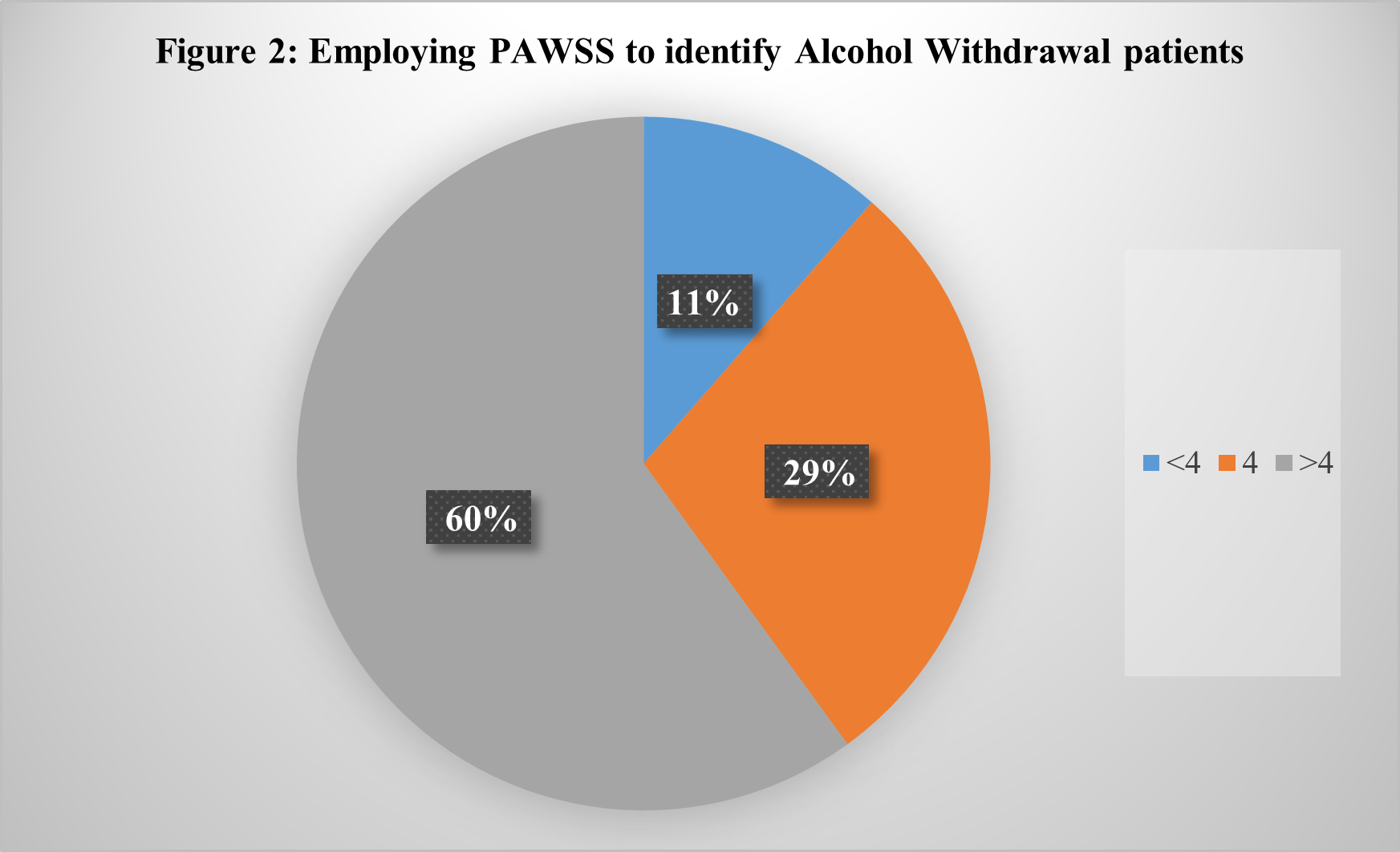
Table 5 indicates that most patients had risk factors related to alcohol withdrawal, while the least common risk factor was machine noise. Table 6 reports that the most common type of seizure in alcohol withdrawal patients was alcohol withdrawal seizure, while in alcohol dependence patients; it was generalized tonic-clonic seizure (GTCS). The least common type of seizure in alcohol withdrawal patients was post-ictal psychosis, and in alcohol dependence patients, it was drug withdrawal seizure.
Table 5: Risk factors
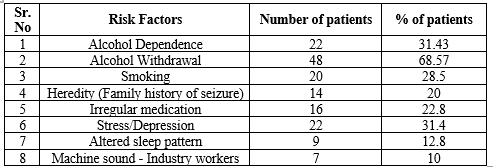
Table 6: Types of Seizure distribution with Alcohol dependence & Alcohol withdrawal patients
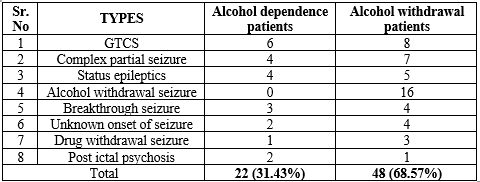
Table 7 demonstrates that most alcohol dependence patients experienced a single seizure episode, whereas most alcohol withdrawal patients had five seizure episodes. Table 8 indicates that neurological complications were more common among alcohol withdrawal patients. Tables 9, 10, and 11 show significant differences between alcohol dependence and alcohol withdrawal patients in terms of psychiatric comorbidity, hematological parameters, and liver function parameters.
Table 7: Seizure Episode Based Distribution With Alcohol Dependence & Alcohol Withdrawal Patients

Table 8: Neurological complications among study participants
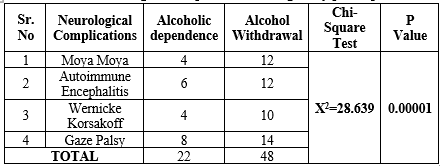
Table 9: Psychiatric co-morbidity among study participants

Table 10: Hematological parameters level among study participants

Table 11: Liver function related parameters level among study participants

DISCUSSION:
Our study confirms that seizures predominantly affected males. Oscar V. Torres et al. conducted a study in 2023 on distress symptoms and alcohol consumption, concluding that anxiety differentially mediates drinking across genders. Their findings revealed that men are more likely to consume alcohol compared to women. This aligns with our study's observations regarding gender differences in alcohol consumption 10. The predominance of middle-aged patients may be linked to factors such as stress, disrupted sleep patterns, and neuropsychiatric complications. Similar findings were observed in our study, aligning with the results of K. Chatterjee et al., who investigated alcohol consumption across different age groups. Their research concluded that the median age group for alcohol consumption falls between 36 and 57 years, which is consistent with the age distribution in our study 11. Seizure episodes had a significant impact on both handloom workers and IT professionals, potentially exacerbated by factors such as night shifts and increased workloads in their respective professions. A similar study by Barikar C. Malathesh et al. explored the legal, social, and occupational challenges faced by individuals with alcohol use disorders. The study found that occupational issues were a major contributor to these problems, leading to increased daily alcohol consumption 12. A significant portion of the patients were alcoholics, which likely exacerbated their existing seizure conditions. Among those with alcohol dependence, 28.5% had an AUDIT score of 8-15, indicating hazardous or harmful drinking, while 71.4% scored 16-20, indicating mild to severe dependence. In a community-based cross-sectional study led by Dr. Arkaprabhu Sau and colleagues, the AUDIT scale was utilized to assess alcohol consumption patterns and correlates among adults and study categorized participants into low-risk, harmful, hazardous, and dependent drinkers based on their AUDIT scores 13. The study assessed alcohol withdrawal's impact on seizure patients using the PAWSS scale. Results showed 11.4% with mild withdrawal (score < 4 xss=removed> 4). Alexander Padron et al.'s study validated PAWSS as a precise predictor of alcohol withdrawal severity, providing clear evidence supporting its predictive accuracy 14. A study by Omer Saatcioglu et al. found that alcohol dependence and withdrawal are significant risk factors for seizures, while stress, depression, and smoking can exacerbate this risk. They observed a positive correlation between nicotine severity, depression, and anxiety in alcohol-dependent individuals who smoke 15. Michael A. Rogawski's research found that generalized tonic-clonic seizures (GTCS) are the most distinct and severe type of seizure observed in individuals with alcohol use disorder, according to his study on advancements in the neurobiology of alcohol withdrawal seizures 16. In our study on patients experiencing alcohol withdrawal, we found that the prevalence of neurological complications such as Moya moya disease was 34.2%, followed by Wernicke-Korsakoff syndrome at 25.7%. Samden D. Lhatoo et al. conducted a study highlighting alcohol withdrawal as a leading cause of seizures, leading to significant morbidity, including conditions like Wernicke encephalopathy and Korsakoff's psychosis, in the context of alcohol withdrawal seizures 17. Febina V. Rahoof and colleagues conducted a cross-sectional study focusing on suicidal ideation in individuals with alcohol use disorders. Their findings align closely with our own study's conclusions. They observed a higher prevalence of suicidal thoughts within this population, noting that sociodemographic factors played a significant role in this correlation 18. Akshay Berad et al. conducted a study comparing hematological parameters in alcoholics and non-alcoholic individuals, revealing differences and abnormalities similar to our study's findings regarding hematological parameters 19. Likewise, Javin Bishnu Gogoi et al. investigated the impact of alcohol on liver function tests in India, showing significant abnormalities that align with our study's observations, indicating alcohol's influence on liver function tests 20.
CONCLUSION:
Alcohol stands out as a significant contributor to seizures, especially concerning risky drinking habits and withdrawal. It's clear that alcohol withdrawal significantly increases the chances of focal seizures, generalized tonic-clonic seizures (GTCS), and the emergence of neuropsychiatric symptoms. This heightened risk during withdrawal highlights the crucial role of proper medical interventions and support for individuals striving to overcome alcohol dependence. These complications can have substantial neuropsychiatric impacts, emphasizing the critical necessity of implementing effective monitoring and treatment strategies.
LIMITATIONS:
As this study is conducted at a single center, the findings may not fully reflect outcomes that could arise from multi-center investigations. Additionally, the limited sample size could impact the generalizability of the results to a wider population
FUTURE STUDY:
To investigate the factors leading to a higher prevalence of seizures and neuropsychiatric symptoms during alcohol withdrawal compared to alcohol dependence. They seek to develop tailored treatment strategies based on their findings.
ACKNOWLEDGMENTS: None.
CONFLICT OF INTEREST: None.
FINANCIAL SUPPORT: None
REFERENCES:
- Fisher RS, Boas WVE, Blume W, et al., Epileptic seizures and epilepsy: definitions proposed by the ILAE and (IBE). Epilepsia. 2005;46(4):470–472.
- Blume WT, Luders HO, Mizrahi E, et al., Glossary of descriptive terminology for ictal semiology: report of the ILAE Task Force on Classification and Terminology. Epilepsia. 2001;42(9):1212–1218.
- Yamane H, Katoh N. Alcoholic epilepsy. A definition and a description of other convulsions related to alcoholism. Eur Neurol. 1998;20(1):17-24.
- Aliyev NN, Aliyev, ZN. The role of amino-acid transmitters in the pathogenesis of delirium tremens: A brief report Journal of Studies on Alcohol. J Stud Alcohol. 2002;63(5):531–533.
- Krystal JH, Staley J, Mason G, et al., Gamma- aminobutyric acid type A receptors and alcoholism: intoxication, dependence, vulnerability, and treatment. Arch Gen Psychiatry. 2006; 63(9):957–968.
- Jose R.Maldonado,Yelizaveta Sher, Smita Das,et.al.,Prospective Validation Study of the Prediction of Alcohol Withdrawal Severity Scale (PAWSS) in Medically Ill Inpatients: A New Scale for the Prediction of Complicated Alcohol Withdrawal Syndrome.Alcohol.48(2014);375-390.
- Scott RM, Smith ER. Moyamoya disease and moyamoya syndrome. N Engl J Med. 2009;360(12):1226-1237.
- Stephen Stewart & Sharon Swain.Assessment and management of alcohol dependence and withdrawal in the acute hospital: concise guidance.Clinical medicine.2012,12(3):266-71.
- Kohler S, Gargano M,Matentzoglu N, et., The Human Phenotype Ontology in 2021. Nucleic Acids Research. 2021;49(D1):D1207-D1217.
- Oscar V Torres, Justin C, Estep, et al. Distresssymptoms and alcohol consumption: anxiety differentiallymediates drinking across gender. Front Psychol. 2023;14.
- K. Chatterjee, A.K. Dwivedi, R. Singh. Age at firstdrink and severity of alcohol dependence. MedicalJournal Armed Forces India. 2021;77(1):70-74.
- Barikar C Malathesh, Channaveerachari Naveen Kumar, Arun Kandasamy, Sydney Moirangthem, SureshBada Math, Pratima Murthy. Legal, Social andOccupational problems in persons with Alcohol use disorder: An exploratory study. Indian Psychol Med.2020;42:1-7.
- Arkaprabha Sau. AUDIT to estimate the pattern andcorrelates of alcohol consumption among the adultpopulation of West Bengal, India: A community basedcross sectional study. J Clin Diagn Res. 2017;11(4):1-4.
- Alexander Padron, Matthew Salzman. Validation ofthe prediction of alcohol withdrawal severity scale(poster). Cooper Medical School of Rowan University Capstone Projects. 2019;18.
- Omer Saatcioglu, Feryal Cam Celikel, DuranCakmak. Depression and Anxiety in alcohol dependentpatients who smoke. Isr J Psychiatry Relat Sci.2008;45(1):33-38.
- Michael A Rogawski. Update on the neurobiology ofalcohol withdrawal seizures. Epilepsy Curr.2005;5(6):225-230.
- Samden D Lhatoo, Manuela. Alcohol withdrawalseizures. MedLink Neurology. 2023.
- Febina V Rahoof, Anish V Cherian, ArunKandasamy, Sinu Ezhumalai, Dhanasekhara Pandian.Suicidal Ideation among persons with alcohol usedisorder: A cross-sectional study. Journal of PsychosocialWellbeing. 2021;2(2):30-41.
- Akshay Berad, Vishakha Chand. Study to comparehematological parameters in alcoholic and non-alcoholicindividuals. National Journal of Physiology, Pharmacyand Pharmcology. 2019;9(12):1176-1178
- Javin Bishnu Gogoi, Mayank Bhasin, Joshil KumarBehera, Kailash Gairola, Haren Baruah. A study of effectof alcohol on Liver Function Tests (LFT) in Garwal hills,India. International Journal of Research in Medical Sciences. 2018;6(1):94-98.


 Subramaniam Kannan* 1
Subramaniam Kannan* 1
 Fathima Nowfi 1
Fathima Nowfi 1
 Abitha
Abitha













 10.5281/zenodo.11481880
10.5281/zenodo.11481880